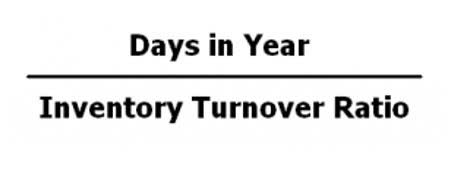
On a company’s balance sheet, current assets usually appear at the top of the asset section, listed in order of liquidity with cash first and less liquid items like inventories last. What would happen if an emergency occurred, and you needed cash or cash equivalents to meet your short-term operating needs? Explore everything you need to know about the concept of liquidity with our simple guide. Current assets have their own section in the balance sheet and are the first account to be recorded in it. Liquid assets don’t have a separate section in the balance sheet and are listed under current assets.
- The most liquid stocks tend to be those with a great deal of interest from various market actors and a lot of daily transaction volume.
- The main problem with relying upon current assets as a measure of liquidity is that some of the accounts within this classification are not so liquid.
- In essence, liquidity serves as the lifeblood of financial markets, fostering efficiency, stability, and confidence among market participants.
- In short, the order of liquidity concept results in a logical sort sequence for the assets listed in the balance sheet.
- This guide will help you to become more familiar with the overall structure of the balance sheet.
3 Presentation of assets and liabilities
These factors Budgeting for Nonprofits can be important for individuals and investors when allocating for liquid vs. non-liquid assets and making investment decisions. It may also take an unforeseeably long amount of time to collect payment from a delinquent client. When considering liquid assets, be aware that a company may not collect all of its accounts receivable balance. For this reason, liquid asset analysis may include the contra asset allowable for doubtful accounts balance to reduce accounts receivable to only what the company thinks they will collect. Cash equivalents are other asset holdings that may be treated similar as cash due to their low risk (or insurance coverage) and short-term duration. Examples of cash equivalents include Treasury bills, Treasury notes, commercial paper, certificates of deposit (CDs), and money market funds.
- The quick ratio is a more stringent solvency ratio that looks at a company’s ability to cover its current liabilities with just its most liquid assets.
- On the other hand, Asset B has a shallow order book, wider bid-ask spread, lower trading volume, and significant price impact for large trades.
- Whatever is the order, it is always better to follow the same order forboth assets and liabilities.
- This includes physical cash, savings account balances, and checking account balances.
The most liquid assets
Next, inventory is the stock lying with the company and can be converted into cash from one month to the time of sales. Sometimes inventory can be sold quickly, so its position may vary from organization to organization. Then comes the non-current assets like plant and machinery, land and building, furniture, vehicles, etc.; they need a longer selling period and thus need time in liquidation. Assets are listed in the balance sheet in order of their liquidity, where cash is listed at the top as it’s already liquid. The next on the list are marketable securities like stocks and bonds, which can be sold in the market in a few days; generally, the next day can be liquidated.

Cash vs. Liquidity in Corporate Finance and Accounting
Other financial assets, ranging from equities to partnership units, fall at various places on the liquidity spectrum. A current asset is balance sheet an item on an entity’s balance sheet that is either cash, a cash equivalent, or which can be converted into cash within one year. If an organization has an operating cycle lasting more than one year, an asset is still classified as current as long as it is converted into cash within the operating cycle.
- The balance sheet is a crucial financial statement that provides insights into a company’s financial position at a particular point in time.
- Generally, liquid assets are traded on well-established markets with a large number of buyers and sellers.
- For instance, some companies sell on credit and the sales proceeds are collected only after the credit term is over.
- Industries like banking have a required amount of cash and cash equivalents that the company must hold to comply with industry regulations.
- These liquid stocks are usually identifiable by their daily volume, which can be in the millions or even hundreds of millions of shares.

Since balance sheets are often used to assess how a company operates compared with others or with its own past periods, accountants prepare balance sheets using generally accepted procedures. Business assets are usually reported by account classifications in order of liquidity, beginning with cash. Cash and cash equivalents are always listed first, as they are the most liquid. Inventory is also considered a current asset, as it can be sold and converted into cash within a relatively short period of time.

Consolidated Liquid Assets

In that case, the company will record a $10 million prepaid expense to account for the insurance expense it will show in the month that it already paid for. There are three Types of Inventory – Raw material inventory, work in progress inventory, and finished goods inventory. It means that the company has rendered services or delivered the product to the customer. Similarly, the liability that has the highest permanence is placed first while the liability order of liquidity assets having the least permanence is placed last in order. As per this rule, capital is regarded as the liability having the highest permanence while bank overdraft is regarded as the liability with the least permanence. An asset is said to be having a higher degree of permanence when an asset is staying longer with the organisation.
